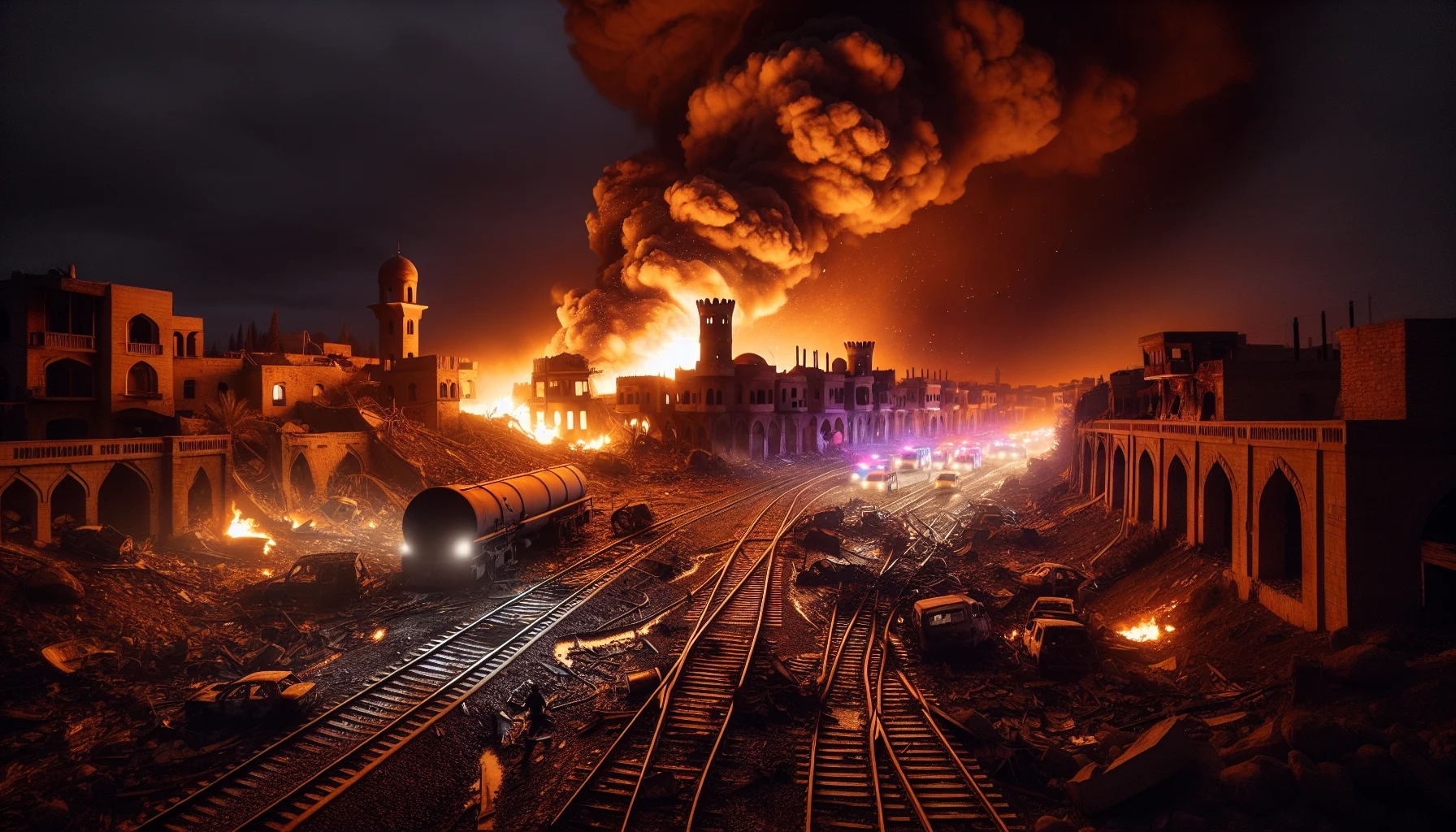
Nishapur Train Disaster
by: The Calamity Calendar Team
February 18, 2004
Prelude to Catastrophe
In the early hours of February 18, 2004, a small section of Iran's expansive railway system became the unlikely stage for one of the nation's most devastating accidents. The rail line near Nishapur, a key artery for transportation across northeastern Iran, plays an essential role in the movement of goods throughout the region. On that fateful day, a freight train parked close to the city of Abu Muslim was loaded with explosive potential: sulfur, petrol, cotton, and fertilizers. These materials, essential for various economic activities, also possess the inherent capacity to ignite a blaze that could spell disaster.
Such a calamity was never intended, yet as the early morning light broke through, a series of unfortunate events began to unfold. The train, once stationary, inexplicably started its lonely journey down the tracks. Unattended, it gathered momentum—a harbinger of the tragedy to come.
The Runaway Train
The issues with the train's brakes were subtle at first, barely detectable amidst the hum of morning life in the quiet countryside. But as the wheels turned and the train meandered down the tracks without guidance, what might have been a minor malfunction transformed. The reports remained unclear about how fast the train was moving; some estimates suggest around 50 km/h as it rumbled through the landscape—a steel leviathan on a collision course with destiny.
As farmers began their daily routines and shopkeepers opened for business in nearby towns, the runaway train hurtled toward Nishapur. The atmosphere was tense with potential energy, an impending catastrophe veiled in the mundane.
The Collision
The hours ticked by until, just after 5:00 AM, the train collided near Nishapur with another waiting on the track. The initial impact was perhaps not as tragic as what followed. The collision sparked a fire, fed hungrily by the assortment of volatile materials onboard. In the cold light of dawn, an inferno blazed, and in that instant, the true disaster began.
Firefighters and emergency personnel rushed to the scene, courageously attempting to contain the growing threat. Their dedication was paramount, though perilously close to disaster.
Thanks for subscribing!
The Explosion
At approximately 9:00 in the morning, the worst fears were realized. The growing fire reached a critical threshold and triggered a series of explosions that resonated like an earthquake. The echoes measured a 5.5 on the Richter scale, a cataclysmic roar that obliterated all within its reach. Villages living in the shadow of the railway were caught in the devastation. Houses and buildings crumbled, five whole villages flattened in seconds, and a gaping crater scarred the earth.
In the immediate aftermath, chaos reigned. The dust of destruction hung heavy in the air, obscuring the full measure of the disaster. But the loss was vast, both human and material. Much of the rescue effort became a recovery mission, as the extent of casualties came into sharp, heartbreaking focus.
Aftermath and Response
In the wake of the disaster, the scale of loss emerged painfully. Nearly 300 lives were lost—firefighters, rescuers, and villagers who happened to be in harm's way. The injured, numbering over 460, were scattered across the region, seeking medical attention in overwhelmed healthcare facilities. The property damage was devastating, estimated in the hundreds of millions of dollars.
Naturally, an event of such magnitude prompted a thorough investigation. The Iranian government initiated a comprehensive review, intent on understanding every factor that contributed to the event. What was uncovered pointed to a critical need for improvements—not just in terms of immediate safety protocols but in broader systemic strategies for handling dangerous materials.
Seeking Safety in the Future
Following the disaster, safety measures across Iran's rail network underwent significant revisions. The transportation of hazardous materials became a focus of heightened scrutiny. Improved brake checks became mandatory, and the implementation of new technologies aimed at preventing such incidents became priority initiatives. This involved upgrading alarm systems and introducing automated monitors to ensure both the human and mechanical elements of train operations were aligned to prevent future tragedies.
The devastation served as a stark lesson in disaster management and the importance of safety across critical infrastructure. The Nishapur Train Disaster doesn't stand as a warning beacon alone but as a catalyst for change, leading to safer practices nationally and discussions in global forums on rail safety.
Legacy of Resilience
In the years since, the understanding and management of railway safety in Iran have evolved considerably, driven by the lessons learned from that tragic February morning. The disaster is studied by experts in risk management and transportation safety, a somber reminder of the potential cost of oversight in critical safety measures.
While the memories of those lost can never be returned to their loved ones, the changes they precipitated aim to protect future generations. Iran, and indeed the world, learned much from the Nishapur Train Disaster, lessons that continue to inform the way nations approach the safe movement of goods and people.
Stay in the Loop!
Become a Calamity Insider and get exclusive Calamity Calendar updates delivered straight to your inbox.
Thanks! You're now subscribed.